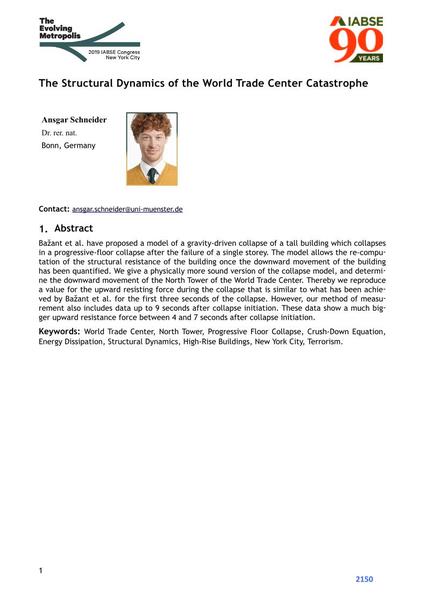The Structural Dynamics of the World Trade Center Catastrophe

|
|
|||||||||||
Bibliographic Details
| Author(s): |
Ansgar Schneider
|
||||
|---|---|---|---|---|---|
| Medium: | conference paper | ||||
| Language(s): | English | ||||
| Conference: | IABSE Congress: The Evolving Metropolis, New York, NY, USA, 4-6 September 2019 | ||||
| Published in: | The Evolving Metropolis | ||||
|
|||||
| Page(s): | 2150-2155 | ||||
| Total no. of pages: | 6 | ||||
| DOI: | 10.2749/newyork.2019.2150 | ||||
| Abstract: |
Bažant et al. have proposed a model of a gravity-driven collapse of a tall building which collapses in a progressive-floor collapse after the failure of a single storey. The model allows the re-computation of the structural resistance of the building once the downward movement of the building has been quantified. We give a physically more sound version of the collapse model, and determine the downward movement of the North Tower of the World Trade Center. Thereby we reproduce a value for the upward resisting force during the collapse that is similar to what has been achieved by Bažant et al. for the first three seconds of the collapse. However, our method of measurement also includes data up to 9 seconds after collapse initiation. These data show a much bigger upward resistance force between 4 and 7 seconds after collapse initiation. |
||||
| Keywords: |
high-rise buildings energy dissipation structural dynamics World Trade Center north tower Progressive Floor Collapse Crush-Down Equation New York City Terrorism
|
||||
